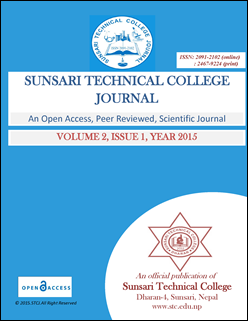Bacteriological Evaluation of Bottled Water Commercially Available in Eastern Nepal
DOI:
https://doi.org/10.3126/stcj.v2i1.14801Keywords:
bottled drinking water, coliforms, heterotrophic count, membrane filter, water qualityAbstract
The demand for bottled water is high in these days and it has been a growing concern about the microbiological quality of such processed water. The objective of this study was to assess the heterotrophic contamination and total coliform. This cross-sectional study was carried out in randomly selected 24 different commercial brands of bottled water available in the commercial market of the eastern region of Nepal. Total coliform and heterotrophic bacteria were enumerated by the membrane filtration and spread plate technique, respectively. Among 24 water sample processed, 62.5% (n=15) samples showed the heterotrophic bacterial count above the acceptable range (<50 CFU/0.1ml) and 75% (n=18) samples showed the total coliform count crossed the WHO guidelines (0 CFU/ml) and not acceptable for drinking. E. Coli was detected in 54.2% of water samples and Enterobacters aerogenes(45.8%), Enterococcus fecalis(20.8%), Pseudomonas sps (20.8%), Bacillus species (16.6%) and Staphylococcus aereus (4.2%) were also detected from different samples. Only 25% of bottled water was acceptable for drinking purpose. The presence of heterotrophs and the coliform in the bottled water is a serious concern for public health. Concerned authority should prioritize this issue and continuously monitor the quality of available bottled water manufacturers in the eastern region to provide safe drinking water to the population.
Sunsari Technical College Journal 2015, 2(1):54-57




